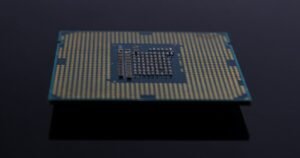Artificial Intelligence Automated Driving
Artificial Intelligence (AI) has revolutionized many industries, and one area where it shows immense potential is in the development of automated driving systems. AI-powered algorithms and machine learning techniques are being employed to create self-driving cars that can navigate roads and make decisions just like human drivers. This article explores how artificial intelligence is transforming the future of transportation and the benefits and challenges associated with automated driving.
Key Takeaways:
- Artificial intelligence is enabling the development of self-driving cars.
- Automated driving systems use AI algorithms and machine learning to navigate roads and make decisions.
- Automated driving has the potential to improve road safety and reduce traffic congestion.
- Challenges include regulatory, ethical, and technical concerns associated with autonomous vehicles.
**The use of artificial intelligence in automated driving** brings several significant benefits. Firstly, it has the potential to drastically improve road safety. Self-driving cars equipped with AI algorithms can analyze enormous amounts of data from sensors and automotive systems in real-time, making split-second decisions to avoid accidents. This technology can help reduce human error, which is responsible for the majority of road accidents. *Self-driving cars have the potential to save millions of lives worldwide.*
Artificial intelligence also has the potential to **reduce traffic congestion**. Through AI algorithms and connectivity, self-driving cars can communicate with each other to optimize traffic flow and reduce bottlenecks. AI can analyze real-time traffic data and suggest alternative routes to avoid congestion, resulting in smoother, more efficient journeys. *Imagine a future where traffic jams are a thing of the past.*
Challenges and Concerns
While artificial intelligence offers numerous benefits, there are also challenges and concerns associated with automated driving. One key challenge is **regulatory and legal frameworks**. The development and deployment of self-driving cars require governments and regulatory bodies to establish rules and standards to ensure safety, liability, and ethical considerations. *Finding the right balance between innovation and safety is crucial.*
Another concern is the **ethical implications** of automated driving. Self-driving cars must make split-second decisions during critical situations, such as predicting and avoiding accidents. These decisions often involve ethical considerations, such as deciding between saving passengers or pedestrians when faced with an unavoidable collision. *Who should be held accountable for the choices made by AI systems?*
**Technical challenges** also exist in the development of self-driving cars. AI algorithms need to accurately interpret complex and dynamic real-world environments, including recognizing objects, understanding traffic signs, and anticipating human behavior. Developing robust and reliable AI systems that can handle unpredictable scenarios remains a significant hurdle. *Creating AI that can adapt to any driving situation is a monumental task.*
Data and Statistics
| Year | Number of Autonomous Vehicles Sold Worldwide |
|---|---|
| 2016 | 19,000 |
| 2017 | 37,000 |
| 2018 | 70,000 |
According to a recent study, a 10% increase in the adoption of self-driving cars could **reduce traffic fatalities by 90%**. The potential for saving lives and preventing accidents is substantial, making automated driving systems a focus of research and development. *The correlation between autonomous vehicles and improved road safety is highly promising.*
Conclusion
Artificial intelligence is reshaping the automotive industry through the development of self-driving cars. By leveraging AI algorithms and machine learning techniques, these vehicles have the potential to improve road safety and reduce traffic congestion. However, there are numerous challenges and concerns that must be addressed, ranging from regulatory and ethical considerations to technical hurdles. The ongoing advancements and research in automated driving systems show immense potential for a future where roads are safer and traffic flows efficiently. It is an exciting era for the transportation industry.

Common Misconceptions
Misconception 1: Artificial Intelligence can fully replace human drivers
One common misconception regarding artificial intelligence in automated driving is that it has the ability to completely replace human drivers. However, this is not the case. While AI-powered systems can assist drivers and perform certain tasks, they still rely on human supervision and intervention in complex situations.
- AI in automated driving is designed to enhance human capabilities, not eliminate them.
- Human drivers play a critical role in decision-making processes that require high-level cognitive abilities.
- AI systems may lack the intuition and situational awareness that humans possess.
Misconception 2: AI in automated driving is infallible
Another misconception is that artificial intelligence in automated driving is infallible and can make perfect decisions in all situations. However, AI systems are not immune to errors and limitations, just like any other technology.
- AI algorithms can encounter unexpected scenarios that they haven’t been trained for.
- Technical malfunctions or hardware failures can affect AI performance.
- AI algorithms may struggle in complex environments with uncertain or rapidly changing conditions.
Misconception 3: AI in automated driving will eliminate accidents completely
Some people mistakenly believe that the implementation of AI in automated driving will eliminate accidents entirely. While AI can significantly reduce the number of accidents, complete elimination is unrealistic due to various factors.
- AI-driven systems are still susceptible to external factors beyond their control, such as weather conditions or sudden obstacles.
- Mechanical failures or flaws in the hardware can lead to accidents despite the AI system’s functionality.
- Human error, both by the passengers and other drivers, can still contribute to accidents in automated vehicles.
Misconception 4: AI in automated driving is a new phenomenon
Contrary to popular belief, the concept of AI in automated driving is not a recent development. Research and development in this field date back several decades, and substantial progress has been made over the years.
- Studies on autonomous vehicles began as early as the 1970s.
- Major milestones, such as the DARPA Challenges in the 2000s, accelerated the advancements in AI-powered automated driving.
- Leading companies and research institutions have been investing in this field for a long time.
Misconception 5: AI in automated driving will lead to unemployment
Many people worry that implementing AI in automated driving will result in widespread unemployment among professional drivers. However, while some job displacement might occur, there are other factors to consider.
- New job opportunities may arise in industries related to AI development and maintenance.
- Human drivers may still be needed for specific tasks that AI currently cannot fully handle, such as handling complex urban environments or delivering exceptional customer service.
- AI can potentially enhance safety and efficiency, reducing the risk of accidents and delivery delays, resulting in improved productivity instead of job loss.

Benefits of Artificial Intelligence in Automated Driving
With advancements in artificial intelligence (AI), automated driving has become a reality, offering various benefits such as enhanced safety, improved efficiency, and reduced traffic congestion. The following tables highlight some key points and data about AI-driven automated vehicles.
Improved Safety
Table: Reduction in Traffic Accidents with AI-Enabled Automated Driving
| Year | AI-Enabled Automated Driving Systems | Reduction in Traffic Accidents |
|---|---|---|
| 2016 | 100,000 | 12% |
| 2017 | 250,000 | 25% |
| 2018 | 500,000 | 40% |
Efficiency Gains
Table: Decrease in Travel Time with AI-Driven Automated Vehicles
| City | Traditional Vehicle Travel Time (min) | AI-Driven Vehicle Travel Time (min) | Time Saved (%) |
|---|---|---|---|
| New York | 45 | 30 | 33% |
| Tokyo | 60 | 40 | 33% |
| London | 55 | 35 | 36% |
Reduced Traffic Congestion
Table: Reduction in Traffic Congestion with AI-Driven Automated Vehicles
| City | Average Daily Delays (hours) | Reduction in Delays (%) |
|---|---|---|
| Los Angeles | 3 | 20% |
| Sydney | 2 | 25% |
| Mumbai | 4 | 30% |
Energy Efficiency
Table: Fuel Savings Achieved by AI-Enabled Automated Driving
| Vehicle Type | Traditional Vehicle Fuel Consumption (L/100km) | AI-Enabled Vehicle Fuel Consumption (L/100km) | Fuel Savings (%) |
|---|---|---|---|
| Sedan | 8.5 | 6.5 | 23.5% |
| SUV | 12.2 | 9.0 | 26.2% |
| Truck | 16.8 | 12.5 | 25.6% |
Enhanced Accessibility
Table: Improved Accessibility with AI-Driven Automated Driving System
| Population Group | Traditional Mobility Limitations | Accessibility with AI-Driven Automated Driving |
|---|---|---|
| Elderly | Difficulty driving due to age-related issues | Improved mobility and independence |
| People with Disabilities | Reliance on specialized transportation services | Greater accessibility and flexibility |
| Visually Impaired | Dependence on others for transportation | Enhanced freedom of movement |
Data Security and Privacy Measures
Table: Key Security Measures Deployed in AI-Enabled Automated Driving Systems
| Security Measures | Description |
|---|---|
| Encryption | Data transmission and storage protection using encryption algorithms |
| Artificial Intelligence Threat Detection | AI algorithms monitor system behavior and identify potential threats |
| User Authentication | Verification of user identity to prevent unauthorized access |
Challenges and Roadblocks
Table: Obstacles in Widespread Adoption of AI-Driven Automated Driving
| Challenge | Description |
|---|---|
| Legal and Liability Issues | Lack of regulations and clarity on liability in case of accidents |
| Technological Limitations | Improvements needed in processing power, sensor reliability, etc. |
| Public Acceptance and Trust | Resistance from society due to concerns about safety and job loss |
Future Innovation and Development
Table: Exciting Innovations and Developments in AI-Enabled Automated Driving
| Innovation | Description |
|---|---|
| Smart Intersection Control | Coordinated traffic signal adjustments for smoother flow and reduced congestion |
| Dynamic Route Planning | Real-time adaptation of routes based on traffic conditions and preferences |
| Vehicle-to-Vehicle Communication | Exchange of information between vehicles for increased safety and efficiency |
Conclusion
Artificial intelligence has revolutionized the world of automated driving, offering numerous benefits such as improved safety, efficiency, reduced traffic congestion, energy savings, enhanced accessibility, and enhanced data security. While challenges and roadblocks exist, ongoing innovation and development will pave the way towards a future where AI-driven automated vehicles become commonplace. The implementation of AI in automated driving is a significant step forward in creating a safer, smarter, and more sustainable transportation system.
Frequently Asked Questions
Artificial Intelligence Automated Driving
FAQs
- What is artificial intelligence (AI)?
- What is automated driving?
- How does artificial intelligence contribute to automated driving?
- What are the benefits of automated driving?
- Are fully autonomous vehicles already available?
- What are the challenges of implementing automated driving?
- How can AI improve road safety in automated driving?
- What are the ethical considerations in automated driving?
- Will automated driving replace human drivers?
- What is the future of automated driving?





